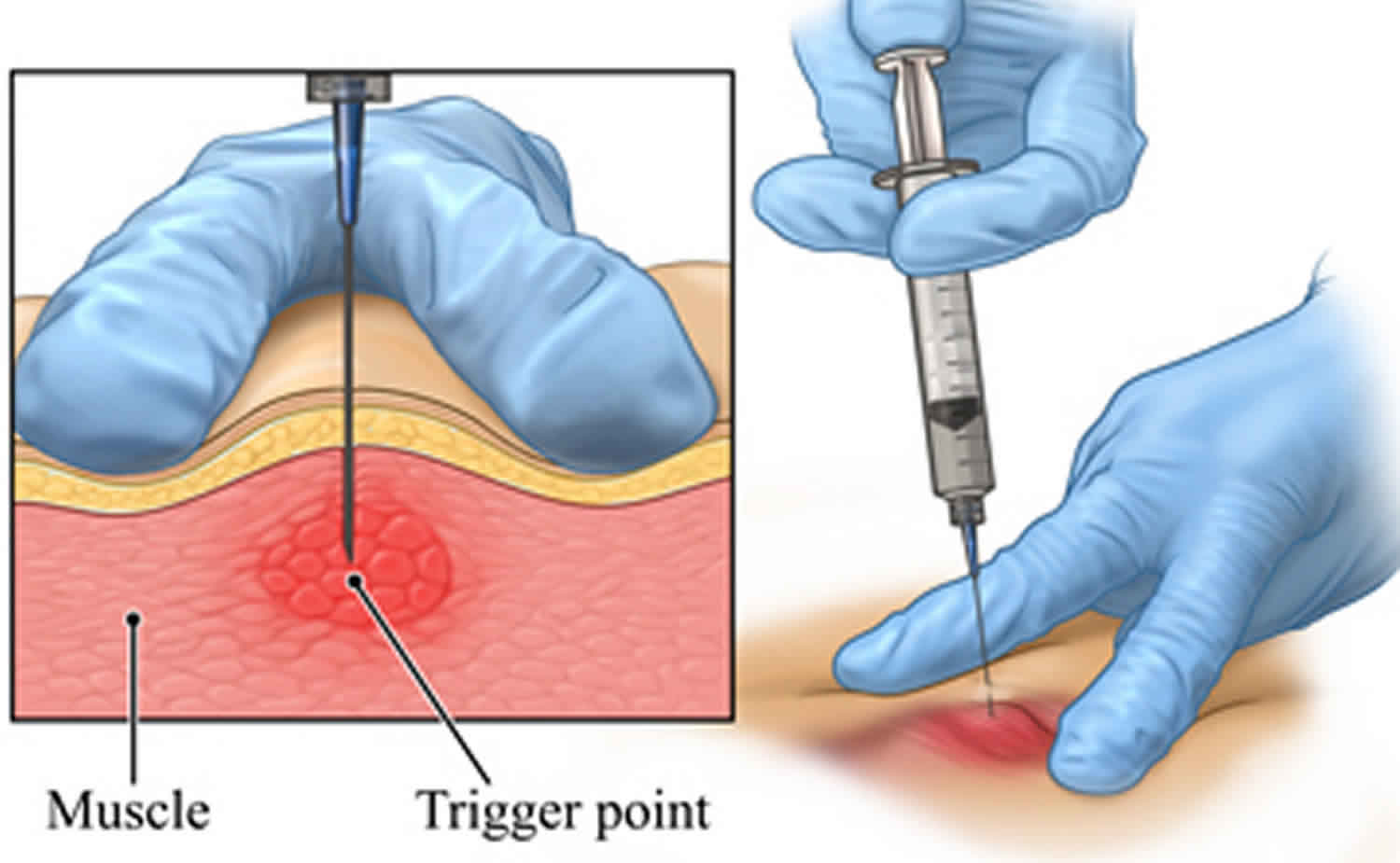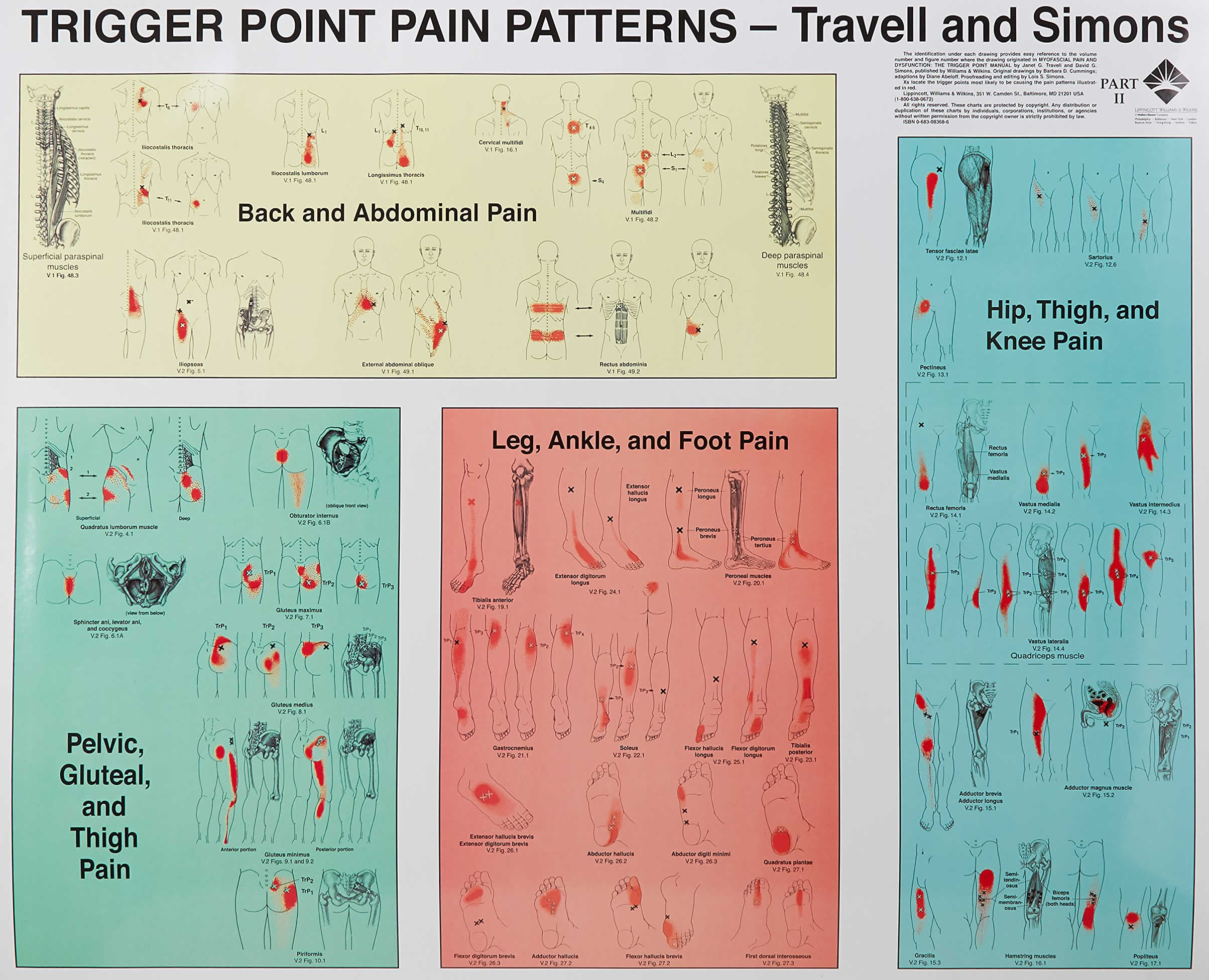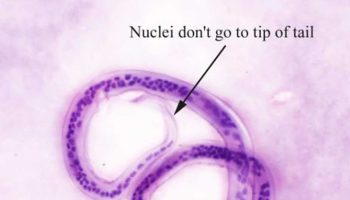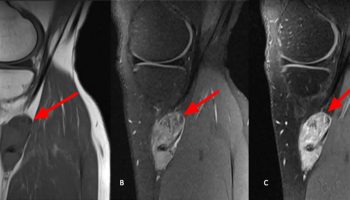Contents
What are trigger point injections
Trigger point injections are shots of medicine into trigger points, which are discrete hyperirritable tense bands of skeletal muscle fibers that are painful on compression and produce referred pain and tenderness as well as problems with muscle function, to help relieve the pain 1. A trigger point often causes referred pain or pain to be felt in other areas, too. For example, a trigger point in the neck or upper back can cause pain in the head. In the head and neck region, trigger point pain may manifest as tension headache, tinnitus, temporomandibular joint pain, eye symptoms or torticollis. In the arm, the pain may mimic bursitis or tendonitis, and in the legs the pain can be a cause of limited range of movement of the knee or ankle. Trigger points are seen in myofascial pain syndrome, a common painful muscle disorder.
The diagnostic criteria for trigger points are under debate, but there are three minimum clinical diagnostic criteria (1–3) and six confirmatory criteria (4–9) 2:
- Presence of a palpable taut band within a skeletal muscle
- Presence of a hypersensitive spot within the taut band
- Reproduction of a referred pain sensation with stimulation of the spot
- Presence of a local twitch response with snapping palpation of the taut band
- Presence of a jump sign
- Patient recognition of the elicited pain
- Predicted referred pain patterns
- Muscle weakness or muscle tightness
- Pain with stretching or contraction of the affected muscle
The medicines are usually local anesthetics like lidocaine. The mechanisms of action of trigger point injection remain obscure and its efficacy remains heterogeneous 1. Trigger point injections are often part of plan that includes other treatments, such as muscle stretching and strengthening.
Figure 1. Trigger point injections

Figure 2. Trigger point chart
Approaches to treatment of trigger point pain include:
Non-pharmacological:
- Trigger point injections of local anesthetic.
- Other supportive measures, including acupuncture, massage and heat.
The long-term effectiveness of various therapies has not been proven in clinical studies. Systematic reviews or randomized controlled trials that evaluated use of trigger point injections in patients with chronic non-malignant pain of musculoskeletal origin that had persisted for at least three months found trigger point injections were relatively safe, but there was no clear evidence of either benefit or ineffectiveness of this approach 3. There is so far no strong evidence for the effectiveness of trigger point injections, and many physicians consider trigger point injections a little more than, if not equivalent to, placebo effects 4.
Pharmacological:
- Simple analgesia including paracetamol and NSAIDs
- Muscle relaxants
- Antidepressant medication as coanalgesia
Who should have a trigger point injection?
Patients with myofascial pain syndrome who have symptomatic trigger points.
Who should not have a trigger point injection?
If you have:
- Anticoagulation or bleeding disorders
- Aspirin ingestion within three days of injection
- The presence of local or systemic infection
- Allergy to anesthetic agents
- Acute muscle trauma
- Extreme fear of needles
What medication is used for trigger point injections?
Medications used for trigger point injections in the clinical studies included saline, sterile water, botulinum toxin A, lidocaine, bupivicaine, procaine, prilocaine and tropisetron 3. One effective treatment for trigger point pain is trigger point injection with local anesthetic. Trigger point injection can effectively inactivate trigger points and provide prompt symptomatic relief.
In some people, just the act of inserting the needle into the trigger point helps break up the muscle tension. Called dry needling, this technique involves inserting a needle into several places in and around the trigger point. Acupuncture also appears to be helpful for some people who have myofascial pain syndrome.
Do trigger point injections cause pain after?
Post-injection soreness is to be expected in most cases. This should not be confused with failure of treatment. This soreness usually lasts 3 to 4 days.
What is myofascial pain syndrome?
Myofascial pain syndrome is a chronic musculoskeletal pain disorder characterized by local and referred pain perceived as deep and aching, and by the presence of myofascial trigger points in any part of the body. In myofascial pain syndrome, pressure on sensitive points in your muscles (trigger points) causes pain in the muscle and sometimes in seemingly unrelated parts of your body. This is called referred pain.
Few epidemiological studies have investigated the prevalence or incidence of myofascial trigger points. One study found that trigger points were the source of pain in 30% of patients consulting a primary care clinician for pain, and a second study reported that trigger points were the principal cause of pain in 85% of patients visiting a tertiary pain clinic.
Myofascial pain syndrome typically occurs after a muscle has been contracted repetitively. This can be caused by repetitive motions used in jobs or hobbies or by stress-related muscle tension.
Different studies have demonstrated that myofascial trigger points are associated with several pain conditions, including migraine, tension-type headache, temporomandibular disorder, neck pain, shoulder pain, epicondylalgia, carpal tunnel syndrome, low back pain, pelvic pain, and whiplash syndrome.
While nearly everyone has experienced muscle tension pain, the discomfort associated with myofascial pain syndrome persists or worsens. Treatment options include physical therapy and trigger point injections. Pain medications and relaxation techniques also can help.
Myofascial pain syndrome signs and symptoms
Signs and symptoms of myofascial pain syndrome may include:
- Deep, aching pain in a muscle
- Pain that persists or worsens
- A tender knot in a muscle
- Difficulty sleeping due to pain
- Trigger points characteristically elicit referred pain when stimulated.
- The duration of the referred pain is variable (second, hours, or days).
- The referred pain is perceived as a deep, aching, and burning pain, although sometimes it may be perceived as superficial pain.
- The referred pain may spread caudally (downward toward your feet) or cranially (upward toward your head).
- The intensity and expanded area of referred pain are positively correlated with the degree of trigger point activity (irritability).
Myofascial pain syndrome causes
Sensitive areas of tight muscle fibers can form in your muscles after injuries or overuse. These sensitive areas are called trigger points. A trigger point in a muscle can cause strain and pain throughout the muscle. When this pain persists and worsens, doctors call it myofascial pain syndrome.
Myofascial pain syndrome pathophysiology
The pathophysiology of myofascial trigger points is incompletely understood, and a number of morphological changes, neurotransmitters, neurosensory features, electrophysiological features, and motor impairments have been implicated on its pathogenesis:
- Morphological changes: A significant increase in stiffness has been found within the taut band of myofascial trigger points.
- Neurotransmitters: Higher levels of neuropeptides (e.g., substance P or calcitonin gene-related peptide), catecholamines (e.g., norepinephrine), and proinflammatory cytokines (e.g., tumor necrosis factor alpha, interleukin 1-beta, interleukin 6, and interleukin 8) have been found in active trigger points.
- Neurosensory features: Spreading referred pain, hypersensitivity to nociceptive stimuli (hyperalgesia) and non-nociceptive stimuli (allodynia), mechanical pain sensitivity, sympathetic facilitation of mechanical sensitization, facilitation of local and referred pains, and attenuated cutaneous blood flow responses.
- Electrophysiology: Some studies have found spontaneous electrical activity, attributed to an increase in miniature endplate potentials and excessive acetylcholine release in myofascial trigger points, although future studies are needed to confirm these findings.
- Motor impairments: Myofascial trigger points can induce changes in normal muscle activation patterns and result in motor dysfunction.
Risk factors for myofascial pain syndrome
Myofascial pain syndrome is caused by a stimulus, such as muscle tightness, that sets off trigger points in your muscles. Factors that may increase your risk of muscle trigger points include:
- Muscle injury. An acute muscle injury or continual muscle stress may lead to the development of trigger points. For example, a spot within or near a strained muscle may become a trigger point. Repetitive motions and poor posture also may increase your risk.
- Stress and anxiety. People who frequently experience stress and anxiety may be more likely to develop trigger points in their muscles. One theory holds that these people may be more likely to clench their muscles, a form of repeated strain that leaves muscles susceptible to trigger points.
Myofascial pain syndrome complications
Complications associated with myofascial pain syndrome may include:
- Sleep problems. Signs and symptoms of myofascial pain syndrome may make it difficult to sleep at night. You may have trouble finding a comfortable sleep position. And if you move at night, you might hit a trigger point and awaken.
- Fibromyalgia. Some research suggests that myofascial pain syndrome may develop into fibromyalgia in some people. Fibromyalgia is a chronic condition that features widespread pain. It’s believed that the brains of people with fibromyalgia become more sensitive to pain signals over time. Some doctors believe myofascial pain syndrome may play a role in starting this process.
Myofascial pain syndrome diagnosis
During the physical exam, your doctor may apply gentle finger pressure to the painful area, feeling for tense areas. Certain ways of pressing on the trigger point can elicit specific responses. For instance, you may experience a muscle twitch.
Muscle pain has many possible causes. Your doctor may recommend other tests and procedures to rule out other causes of muscle pain.
Myofascial pain syndrome treatment
Treatment for myofascial pain syndrome typically includes medications, trigger point injections or physical therapy. No conclusive evidence supports using one therapy over another, but exercise is considered an important component of any treatment program. Discuss your options and treatment preferences with your doctor. You may need to try more than one approach to find pain relief.
The most commonly used interventions are as follows:
- Massage, ischemic compression, pressure release, and other soft tissue interventions (such as muscle energy) have shown moderately strong evidence for immediate pain relief.
- Dry needling of trigger points has shown clinical benefits, but more studies are needed.
- Laser therapy shows strong evidence of effectiveness for pain relief.
- Transcutaneous electrical nerve stimulation (TENS) and magnet therapy have shown moderate evidence for immediate effects over myofascial trigger points.
- Exercise has shown moderate benefit and can include stretching and range of motion, strengthening, endurance, or coordination exercises.
- Ultrasound therapy has weak evidence for effectiveness in management of trigger points.
- Stretching. A physical therapist may lead you through gentle stretching exercises to help ease the pain in your affected muscle. If you feel trigger point pain when stretching, the physical therapist may spray a numbing solution on your skin.
- Posture training. Improving your posture can help relieve myofascial pain, particularly in your neck. Exercises that strengthen the muscles surrounding your trigger point will help you avoid overworking any one muscle.
- Heat. Applying heat, via a hot pack or a hot shower, can help relieve muscle tension and reduce pain.
Medications used for myofascial pain syndrome include:
- Pain relievers. Over-the-counter pain relievers such as ibuprofen (Advil, Motrin IB, others) and naproxen sodium (Aleve) may help some people. Or your doctor may prescribe stronger pain relievers. Some are available in patches that you place on your skin.
- Antidepressants. Many types of antidepressants can help relieve pain. For some people with myofascial pain syndrome, amitriptyline appears to reduce pain and improve sleep.
- Sedatives. Clonazepam (Klonopin) helps treat the anxiety and poor sleep that sometimes occur with myofascial pain syndrome. It must be used carefully because it can cause sleepiness and can be habit-forming.
Trigger point injection technique
Your doctor first locates a trigger point by pressing around the painful area. This may cause your muscle to hurt or twitch. This tells the doctor that he or she has found the spot to do the injection.
The area is cleaned. Your doctor then injects the medicine into the trigger point. He or she may inject the medicine in more than one direction within the trigger point. The doctor may change direction without removing the needle.
If you have more than one trigger point in the muscle, your doctor may repeat the process.
Your doctor may stretch the area to help the muscle relax. He or she may also show you how to move and stretch the muscle yourself.
The procedure takes about 10 to 30 minutes. How long it takes depends on how many trigger points are treated. But an injection itself takes only a few moments.
What to expect after trigger point injections
The area may feel a bit numb for a few hours. It may also feel sore. Other problems from trigger point injections are rare. There is a chance of skin infection at the injection site. And if injections are done in the chest area, there is a small risk of puncturing the outer lining of the lung (pneumothorax).
Trigger point injections may reduce some or all of your pain. But the pain can come back after the medicine wears off. If your pain comes back, your doctor may suggest more shots or other treatment for longer-lasting relief.
You should remain active following the trigger point injections but avoid strenuous activity for the first 3 to 4 days after the injection.
Follow your doctor’s instructions carefully. And tell your doctor about any new or unusual symptoms, such as chest pain or shortness of breath.
Be sure to make and go to all appointments, and call your doctor or nurse call line if you are having problems. It’s also a good idea to know your test results and keep a list of the medicines you take.
How long do trigger point injections last?
Trigger point injections may reduce some or all of your pain. But the pain can come back after the medicine wears off. If your pain comes back, your doctor may suggest more trigger point injections or other treatment for longer-lasting relief.
Trigger point injections side effects
Trigger point injections side effects include:
- Vasovagal syncope (fainting)
- Skin infection
- Collapsed lung (very rare)
- Hematoma formation; avoid by applying direct pressure for at least two minutes after injection.
- Wong CS, Wong SH. A new look at trigger point injections. Anesthesiol Res Pract. 2011;2012:492452. doi:10.1155/2012/492452 https://www.ncbi.nlm.nih.gov/pmc/articles/PMC3182370/[↩][↩]
- Myofascial Pain. Global Year Against Musculoskeletal Pain Oct 2009 – Oct 2010. http://s3.amazonaws.com/rdcms-iasp/files/production/public/Content/ContentFolders/GlobalYearAgainstPain2/MusculoskeletalPainFactSheets/MyofascialPain_Final.pdf[↩]
- Scott NA, Guo B, Barton PM, et al. Trigger point injections for chronic non-malignant musculoskeletal pain: a systematic review. 2009. In: Database of Abstracts of Reviews of Effects (DARE): Quality-assessed Reviews [Internet]. York (UK): Centre for Reviews and Dissemination (UK); 1995-. Available from: https://www.ncbi.nlm.nih.gov/books/NBK78427[↩][↩]
- Wong CS, Wong SH. A new look at trigger point injections. Anesthesiol Res Pract. 2011;2012:492452. doi:10.1155/2012/492452 https://www.ncbi.nlm.nih.gov/pmc/articles/PMC3182370[↩]







